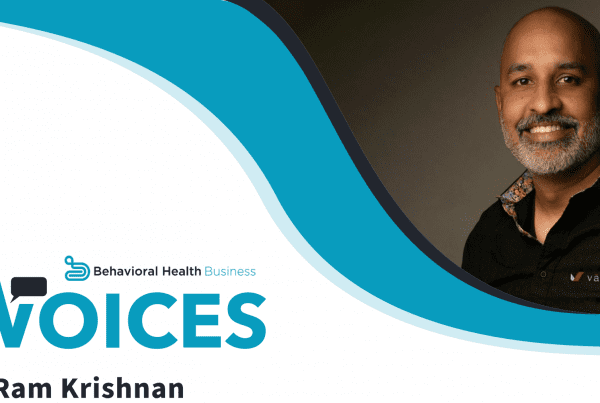Behavioral health treatment plans are an important tool, both for providers and patients. A treatment plan is a roadmap that describes where your patient is right now, where they are going, and how they will get there. This makes the treatment plan a cornerstone of an effective behavioral health practice.
What is a Treatment Plan?
A behavioral health treatment plan includes basic patient information, patient behavioral health concerns, treatment goals as well as step-by-step objectives to reach each goal, and measurement criteria for progress and outcomes. A treatment plan is a versatile document that reflects the patient and their needs. It provides structure and direction for the patient’s care, and it should be updated periodically.
Components of a Behavioral Health Treatment Plan
Although treatment plans can vary widely, they generally have at least the following key sections.
Assessment and Diagnosis
This section explains how assessment data informs the treatment plan. This includes intake data, psychosocial history, description and history of symptoms, and past and present diagnoses. Arriving at at accurate diagnosis is extremely important. And, it is possible that past diagnoses may have been wrong, or incomplete. Providers will want to explain the assessments performed and resulting diagnosis in this section of the treatment plan.
Treatment Goals and Objectives
Patients often come with knowledge of what is wrong, but they may not know where they want to be in terms of behavioral health goals, and they are even less likely to know how to get there. Strong treatment plans will include patient involvement in setting measurable treatment goals, including “chunking” into smaller objectives that are more actionable and manageable. The provider should steer the patient toward treatment goals and objectives that are SMART: Specific, Measurable, Attainable, Relevant, and Time-bound. Some objectives may be further broken down into steps, such as specific actions a patient can take when facing anxiety. The patient may want to refer to this section regularly in their day-to-day life, and it is often necessary to reference it in sessions.
Some clinicians like to call this section a treatment “contract.” This can help strengthen the commitment of the patient to follow through on the plan. Treatment goals and objectives, as well as treatment contracts, can be vital to successful goal achievement.
Interventions and Strategies
Select several interventions and strategies (preferably evidence-based) to help the patient achieve their goals. Interventions can include types of therapy that will be used in client sessions, such as cognitive behavioral therapy, narrative therapy, strengths-based therapy, or other methods. Interventions can also include psychoeducation, materials and resources, progress monitoring, and medications. Strategies, such as deep breathing exercises when encountering stress, will need to be taught to the patient. This may include demonstration by the clinician, so the patient remembers to use the strategy in their daily life when they need it. Interventions and strategies are not one-size-fits-all; it is best to modify them to fit to each patient’s needs.
Timeline and Progress Monitoring
Timeframes are a key part of treatment plans. Make progress monitoring a part of each appointment. It can include patient data submitted electronically through a patient portal, or patients can provide the necessary information at each appointment. This helps reduce the number of appointments. Of course, the provider will want to make sure it aligns with expectations for the patient. Treatment goals should all have timeframes, but these timeframes are not set in stone—progress monitoring will determine if adjustments need to be made.
Person-Centered Planning
Your patient should be closely involved in planning their treatment. You are only with them for appointments occasionally, but the patient lives with and uses the treatment plan daily. Person-centered planning does not mean that you let the patient write their own treatment plan, but rather that you involve them in each step, carefully explaining why you are recommending certain goals, interventions, strategies, and timelines.
Make the treatment plan collaborative and offer patient choice, when appropriate. This will help the patient gain understanding and stay engaged. At the same time, you are the expert; draw on your training and experience.
Cultural Competence and Diversity
Do not underestimate the importance of cultural sensitivity in treatment planning. Many cultures still have a stigma attached to behavioral health, so it is important to address this and be discreet when needed.
Tailor treatment plans for diverse populations. Good strategies include learning about the cultures and religious views of the patients you serve. You may even want to organize staff training programs. In addition, it is generally better to ask questions of patients, rather than making assumptions. Work with your patients to adapt their treatment plans to their cultural and religious needs.
Legal and Ethical Considerations
It is important to regularly obtain informed consent from patients and to keep their treatment plan confidential except when disclosure is appropriate. As a provider, you have legal and ethical obligations, such as safeguarding patients’ protected health information, compliance with HIPAA, and a duty to report specific threats to others or themselves.
You also have an ethical obligation to offer the patient efficacious treatment tailored to their needs that benefits their behavioral health. A well-written behavioral health treatment plan is a great way to help with this.
Challenges in Treatment Planning
Several common challenges faced by behavioral health professionals include writing the treatment plan, tailoring it to the patient, and following through on it. These are not surprising, and patients themselves face many of the same issues. The treatment plan is not something likely to be completed on the first visit, but you’ll want it in place relatively quickly, so that you can make progress. The right software can help improve the process. Often times, working with an EHR-integrated behavioral health treatment plan is easier and more efficient than paper.
Look for a solution that will pre-fill information obtained via intake forms and other sources. Starting with a treatment plan template – rather than writing one each time from scratch – is another time saver.
It is important to be intentional about revisiting the treatment plan at each appointment, even if only to remind the patient of their goals and of how far they have progressed already.
Documenting and Updating Treatment Plans
Accurate documentation is essential. Update your patients’ treatment plan periodically, based on notes and assessments. Keep a close eye on the the indicated timeframes for treatment goals and emerging patient needs. Establishing consistent routines and keeping up on documentation can be critical to outcomes.
Integrating Technology
Modern treatment planning can include telehealth technology for virtual therapy sessions, clinical documentation, medication management, and more. Some of these technologies are client-facing, some are only for practice staff, and some are both.
Not every patient is comfortable with technology, but even for such patients, providers and staff can use technology to create effective treatment plans. Although there is no substitute for patient interaction, don’t forget – tools that help you save time on other tasks will free up more time to spend with your patients.
Conclusion
Consider how to make comprehensive, person-centered treatment planning your goal. This can lead to improvement in quality of care, and your patients will see the positive outcomes in their day-to-day lives.









